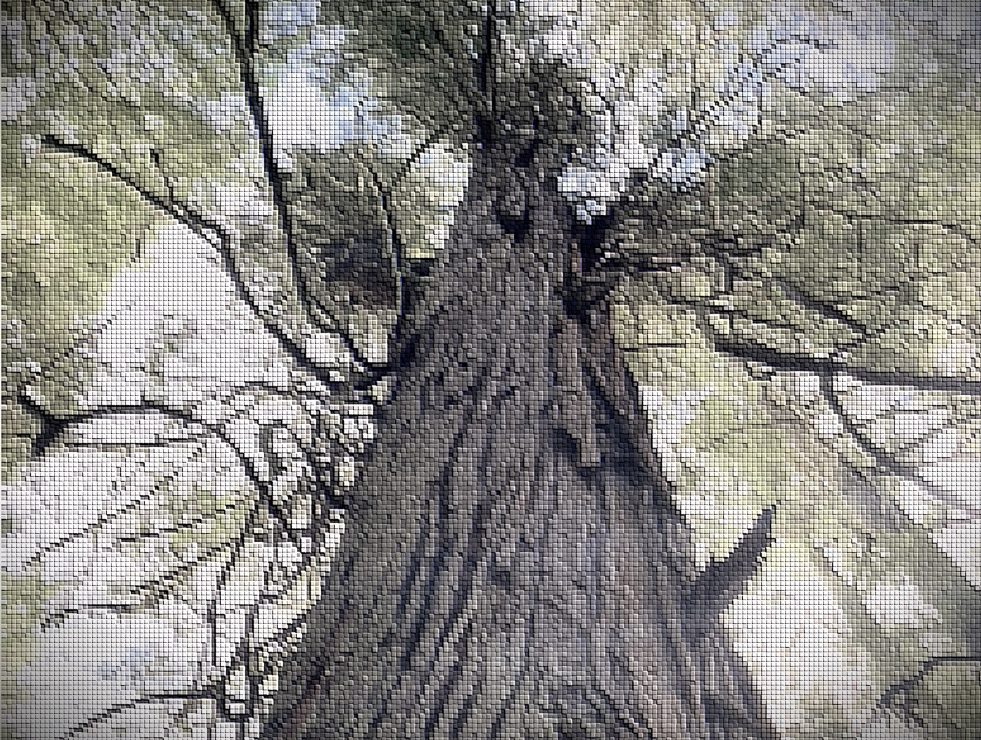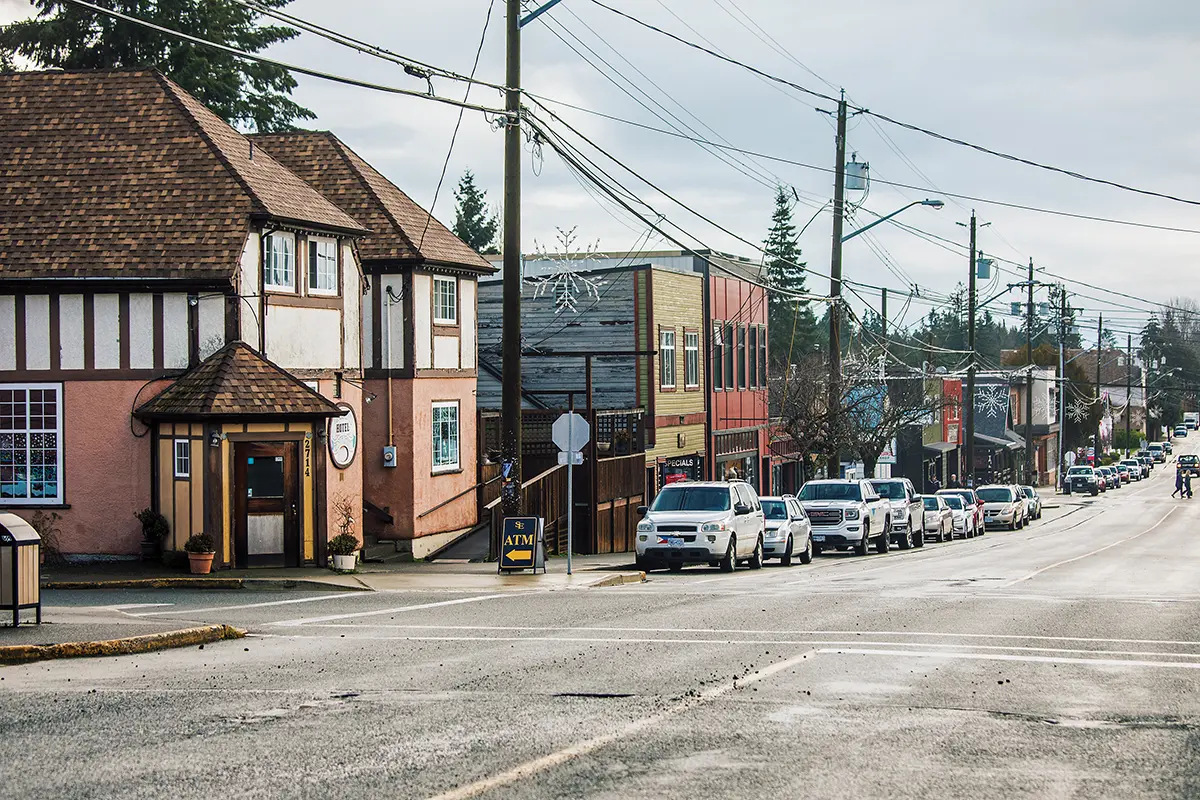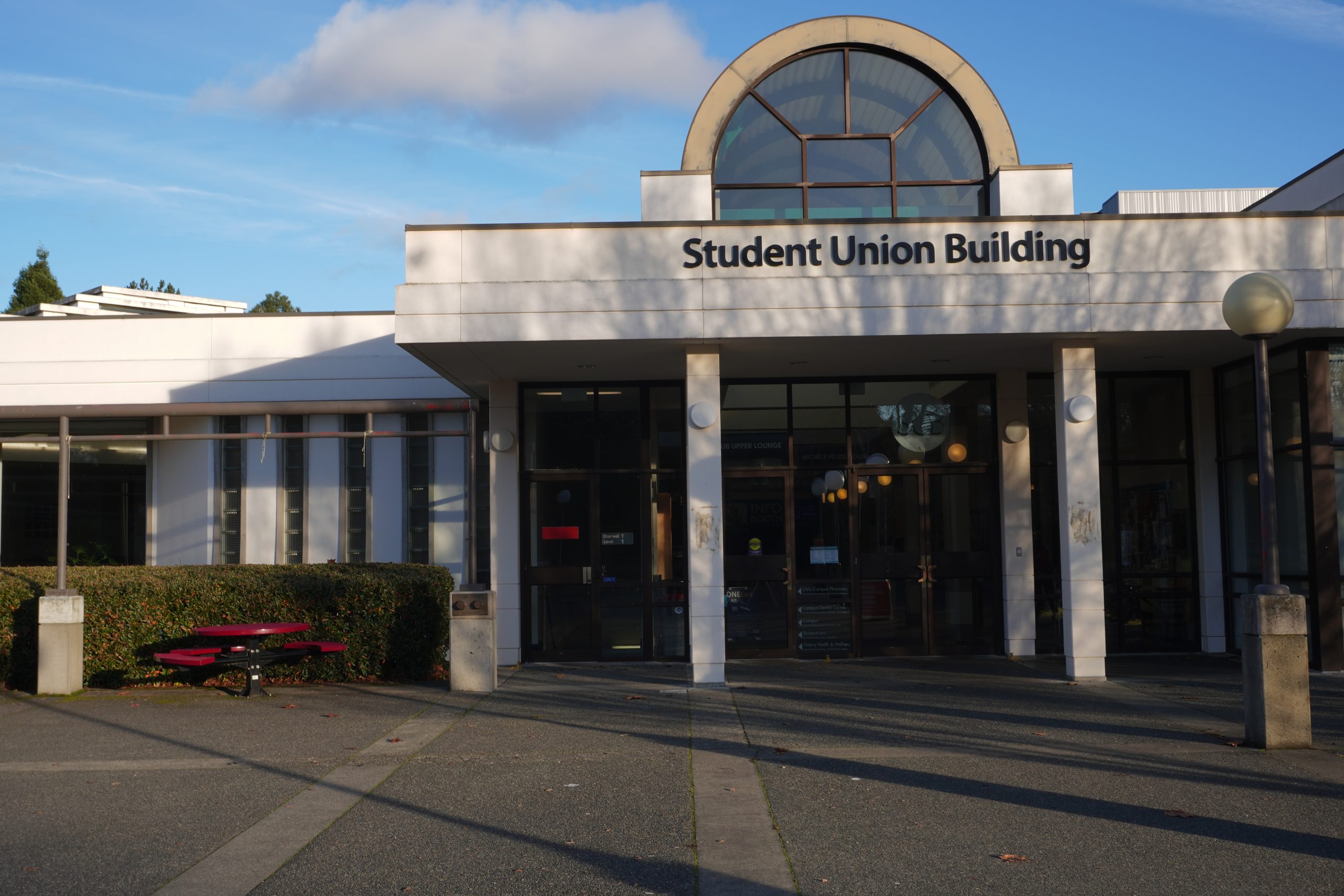UVic’s climate action plan promises major changes to how we live and learn

Photo courtesy of Carey Newman.
According to UVic’s Climate and Sustainability Action Plan (CSAP), the university’s campus may look and operate quite differently by 2030. Although many of the CSAP’s initiatives are long-term changes, others are already in progress.
Goals for the future
For one, through CSAP, UVic intends for single-occupancy vehicle transportation to be reduced. Their goal is for 70 per cent of all transportation to and from campus to be sustainable — modes like public transit, cycling, walking, and carpooling — by 2030.
According to a 2023 transportation survey conducted by the university, 54 per cent of transportation to and from UVic in 2023 included one of these options. Additional electric vehicle charging stations, revamped parking pricing to disincentivize single-occupancy drivers, and additional RapidBus transit options, with faster service, are a few changes UVic intends to implement.
Also by 2030, UVic intends for plant-based foods to make up 60 per cent of campus menu items, with the university’s food supply chain using 30 per cent local suppliers.
By 2040, CSAP also intends for all campus buildings to include low-carbon energy systems, as well as a Gold LEED certification for new buildings. At present, nine buildings on campus have the “green building” LEED certification.
Campus as a living lab
One of CSAP’s integrated initiatives, supporting these and other projects at UVic, is Campus as a Living Lab (CLL).
CSAP defines CLL as a university-wide program that coordinates research and teaching projects to use the campus as a place for students and faculty to engage with, trial, and advance real-world climate and sustainability solutions. An increasingly popular approach for many universities, the key idea behind CLL is to create experiential learning and practical engagement opportunities on campus.
Acting Manager of Sustainability at UVic, Kylie Hissa, explained that generating new research is one thing, but “implementing [those] learnings in practice” is another.
A primary goal of CSAP is to have Indigenous Knowledge systems guide relationships with campus lands and waters. Management of natural areas, including environmental restoration projects, will include input from Knowledge Holders and local First Nations.
Furthermore, lək̓ʷəŋən place names and interpretive signage will be used to bring awareness to Indigenous languages and connections to campus lands and waters. Other Indigenous systems within CSAP include “opportunities for land-based learning and sustainable land and water management on campus, such as qʷɫaʔəl | ḰȽO¸EL (Kwetlal | camas) harvesting, pit cooks, native plant gardens, and local food systems,” according to the goals of CSAP.
CLL is currently influencing the campus through projects that incorporate UVic coursework. Ecological Restoration Principles and Practice (ES 341) is an environmental studies course that allows students to engage in hands-on restoration projects on and around campus, including habitat restoration, invasive species removal and native species planting.
Another is Green Energy and Renewable Energy Systems (ENGR 446), an engineering course that involves student projects focused on designing renewable energy solutions for campus buildings or proposing innovative energy-saving measures.
The Seedling project
Another CSAP initiative is the Seedling project — an initiative planning to plant a Western red cedar tree, design a virtual 3D totem, and commit to carving and raising the totem from the cedar when it matures in 600 – 1 000 years.
“During the process of carving [an old totem], I decided that I wanted to find a different way of making full-size poles without cutting down old growth trees,” said Carey Newman, impact chair in Indigenous art practices at UVic.
Newman’s work inspires change through new practices in totem pole carving. He told the Martlet that one of his goals is “demonstrating to policy makers and industry that if First Nations culture can make changes like this to traditions that are thousands of years old, then surely we can make similar changes to how we think about economy and how we think about industry.”
The idea for the Seedling project came from Newman’s attempts to become more proactive, rather than reactive. One of the most important parts of the project for him is that “it integrates both art and Indigenous ways of knowing, or Indigenous knowledge, into creating a solution.”
Because part of the initiative is for the totem to first be designed in digital form, UVic is committing to designing more sustainable technology to preserve the design until the sapling’s maturity.
Newman told the Martlet that he hopes to see a change in the way people think about their relationship to the land.
He said he would like people to see themselves as “in relationship with the land, and instead of thinking of ourselves as holding dominion over land, think about [how] what we do to the land, we do to ourselves — and our campus is part of that.”








